-
Language
-
Currency
-
NEW
- All New Products
- New Kitchen Knives
- New Kitchen Tools
- Latest Vintage
- New Pocket & Outdoor
- New Pantry
-
What's in my Basket Series
- Nite Yun - Lunette
- Scott & Frost Clark - Dad's Luncheonette, Chef & Author
- Angela Wilson - Avedano's
- Susan Kim - Eat Doshi
- Seth Stowaway - Osito
- Dr. Harold McGee - Author
- Ryo Sakai -Kuma Sushi
- Ian McNemar - Woodworker, Instructor
- Anna Voloshyna - Author
- Jorge Martinex Lillard - Lolo´
- Chris Yang - Piglet & Co
- Griffin Wilson - @cabincorn
- Gabe Rudolph - Gestura Utensils
- Molly DeCoudreaux - Food Photographer
- Geoff Davis - Burdell Soul Food
- Jen and Wes - @crazythickasians
- Josh Donald - Bernal Cutlery
- Kelly Kozak - Bernal Cutlery
- Jessica Sullivan - Poppy SF
- Sylvan Mishima Brackett - Rintaro
- Michael Myers - Film Character
- Ali Hooke - @alihooke
- Bruce Hill - The Chef's Press
- Dylan Carasco - Butcher's Guide
- Spencer Horowitz - Hadeem
-
Japanese Knives
- Ashi Hamono
- Gihei Knives
- Godo Tadaharu
- Hatsukokoro
- Hitohira
- Iwasaki Kamisori
- Kaji-Bei
- Kamo Shiro
- Kanehide
- Konosuke
- MAC Knife
- Masakane
- Makoto Tadokoro Marushin
- Morihei
- Myojin Riki Sesakusho
- Nakagawa Hamono
- Naozumi
- Nigara Hamono
- Sakai Kikumori
- Shigefusa
- Tagai
- Takada no Hamono
- Tanabe Tatara
- Tosa
- Tsukasa Hinoura
- Yoshikane
- Yoshikazu Tanaka
- Wakui
-
Global Knives
- Allday Goods (GBR)
- Alma Knife Co. (USA)
- Astral Works (USA)
- Au Sabot (FRA)
- AZ Knives (ARG)
- Benchmade Cutlery (USA)
- Bernal Cutlery (USA)
- Blenheim Forge (GBR)
- Chazeau Honoré (FRA)
- Dexter Russell (USA)
- Eichenlaub Tableware (DEU)
- Florentine Kitchen Knives (ESP)
- Fontenille Pataud (FRA)
- Friedr Herder (DEU)
- J Adams (GBR)
- John Nowill & Son (GBR)
- K Sabatier (FRA)
- Pallares (ESP)
- Roland Lannier (FRA)
- Rolin Knives (USA)
- Silverthorn (USA)
- Steelport Knife Co. (USA)
- Windmühlenmesser (DEU)
- Zirh (TUR)
-
Styles
- Bernal Cutlery Collaborations
- Knife Sets
- Japanese Kitchen Knives
- Western Kitchen Knives
- Chinese Style Cleavers
- Bread
- Butchery
- Cheese | Charcuterie
- Pocket | Folding
-
Outdoor
- A Wright & Son (GBR)
- Au Sabot Folders (FRA)
- Benchmade (USA)
- Buck Knives (USA)
- David Margrita (FRA)
- Friedr Herder (DEU)
- Fontenille Pataud (FRA)
- Helle (NOR)
- Higonokami
- Hults Bruk Axes (SWE)
- Ibberson (GBR)
- Joseph Rogers & Sons (GBR)
- Kalthoff Axes (SWE)
- MOKI Knives (JPN)
- Morakniv (SWE)
- Opinel (FRA)
- Pallares (ESP)
- Tactile Knife Company (USA)
- Wood Tools (GBR)
- Vintage & New Vintage
- Woodworking | Hobby | Craft
- Kamisori Razors
- Carving Forks | Knives | Sets
- Table | Steak
- Fixed Blades | Axes | Outdoor Tools
- Scissors | Shears | Snips
- Left Handed
- Vintage
- Sharpening
- Kitchen | Cookware
- Tableware | Service
- Pantry
- Accessories
- Deals
- Gift Cards
- INFO
or
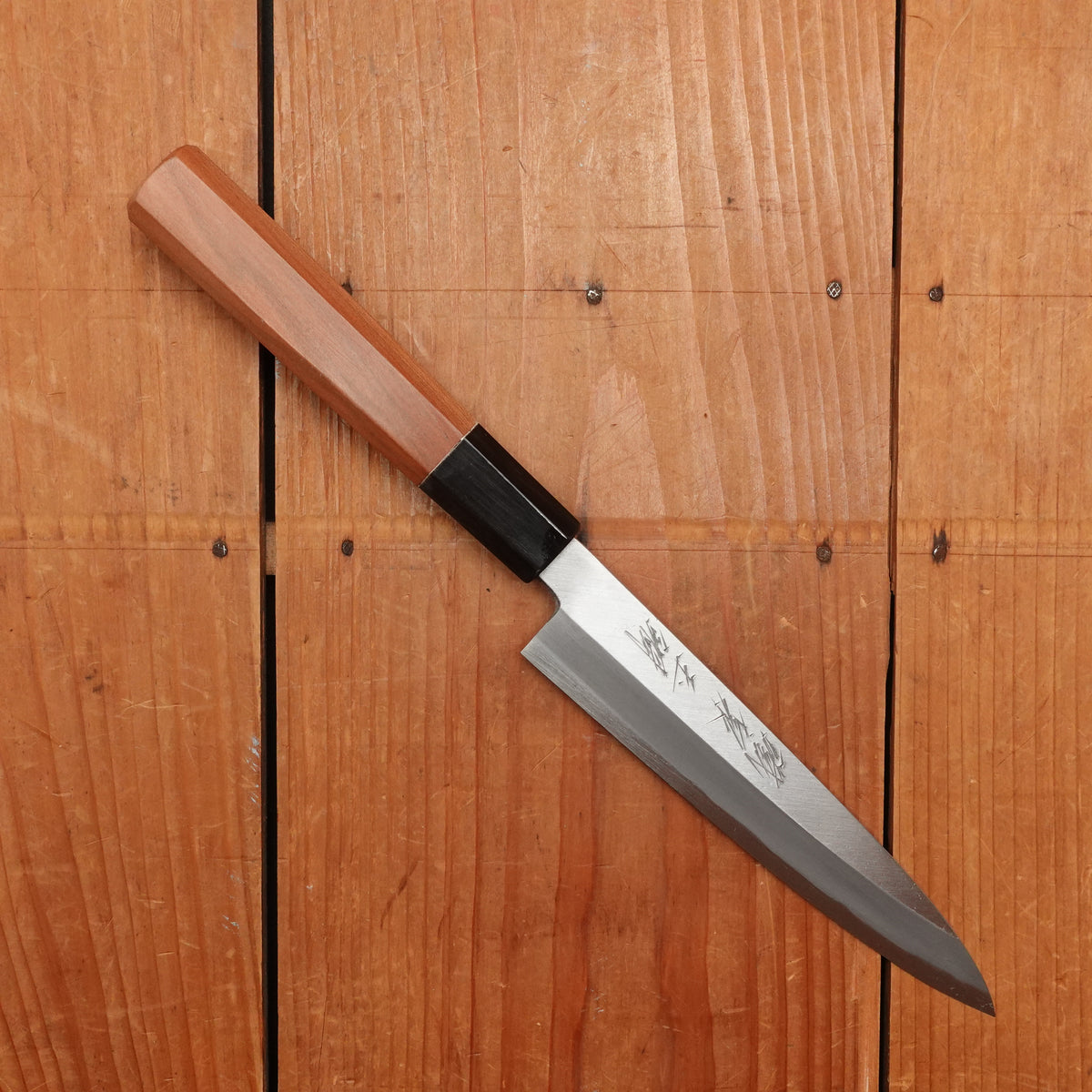
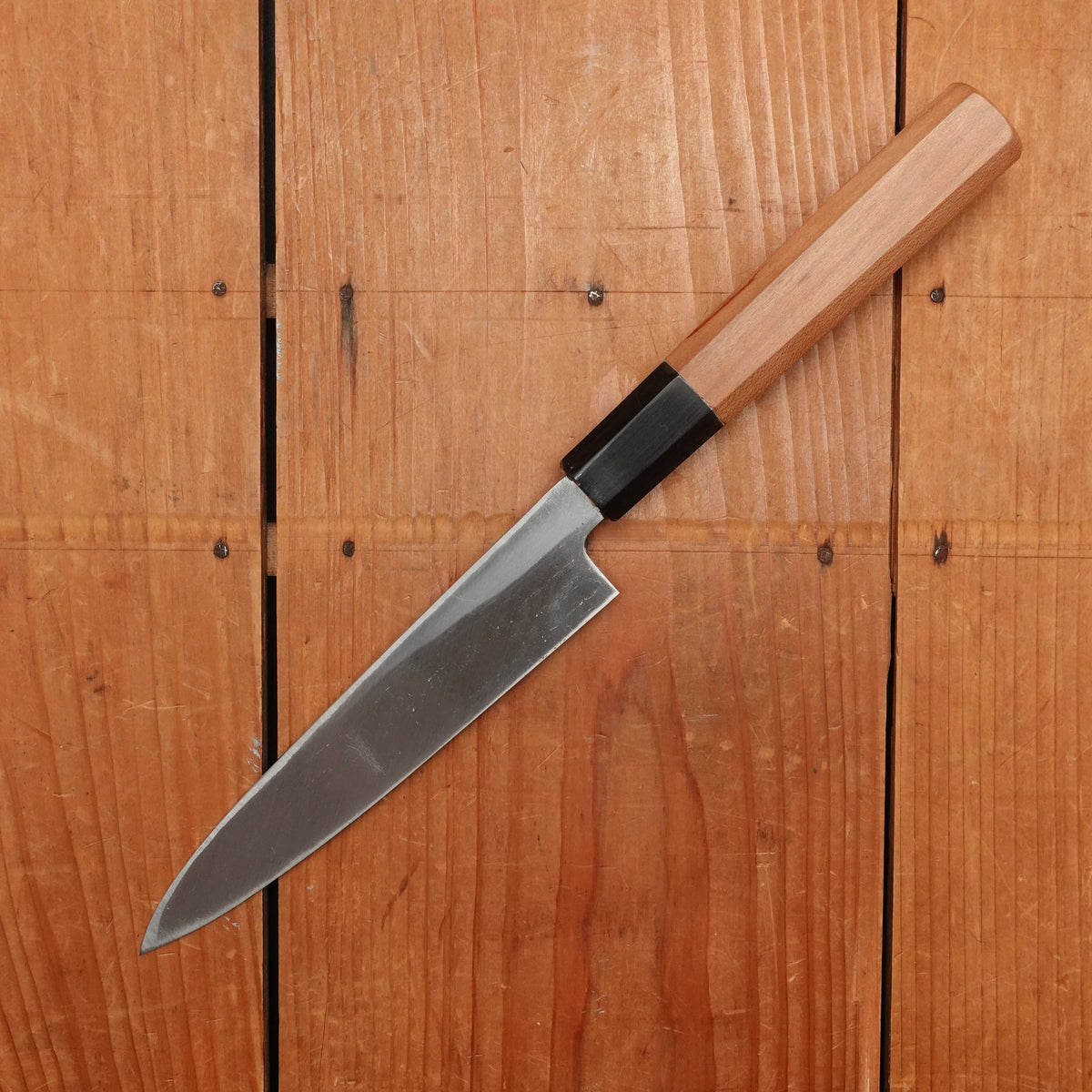
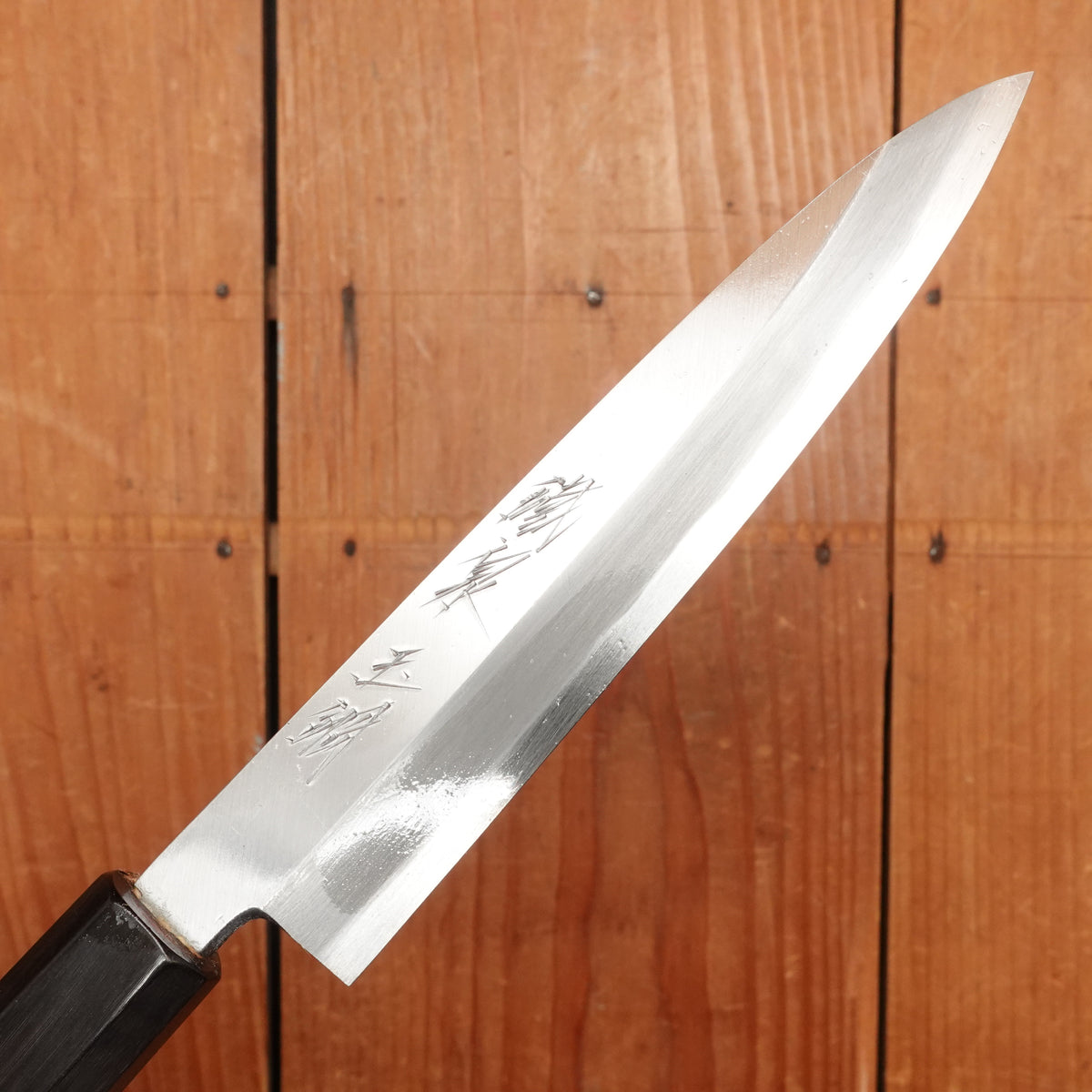
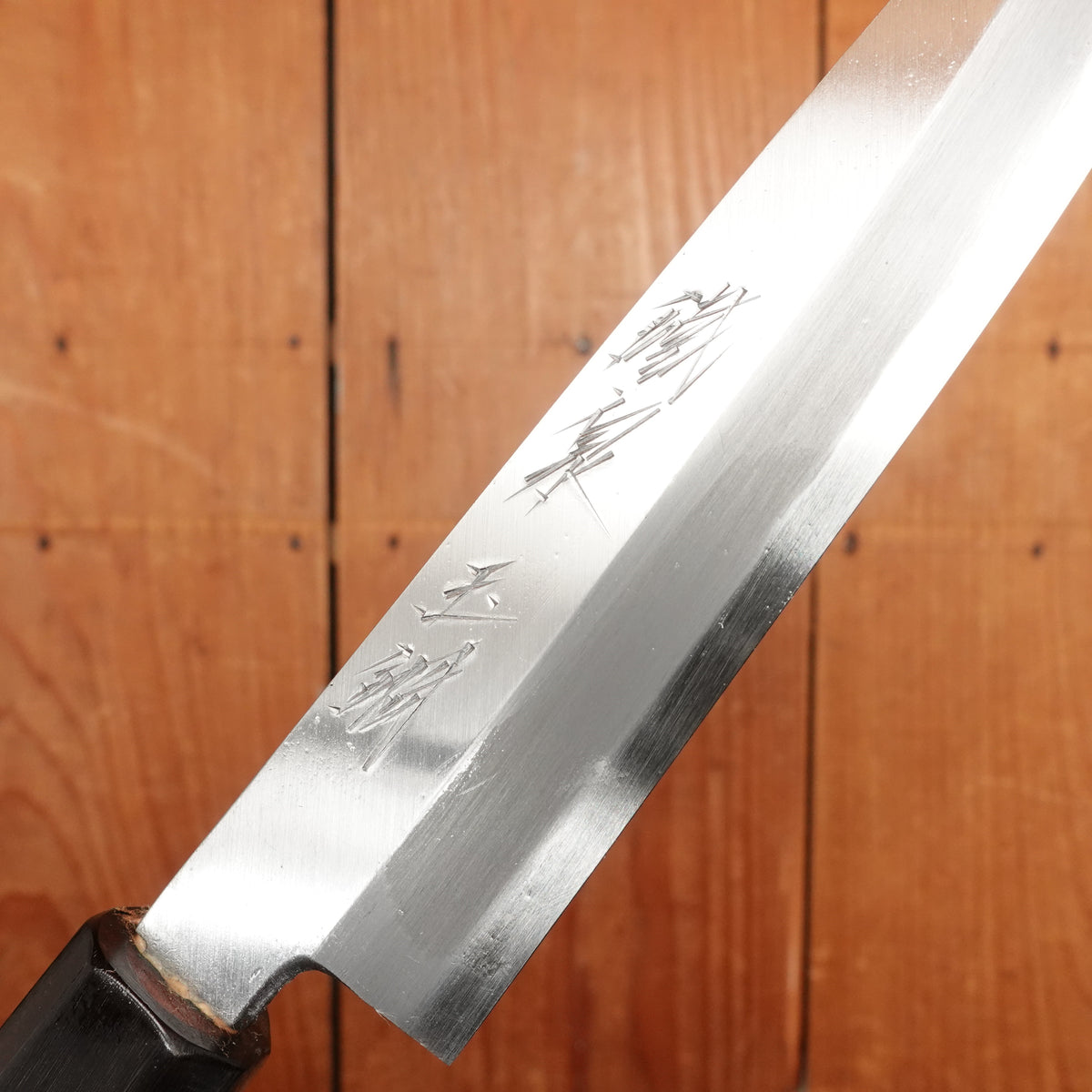
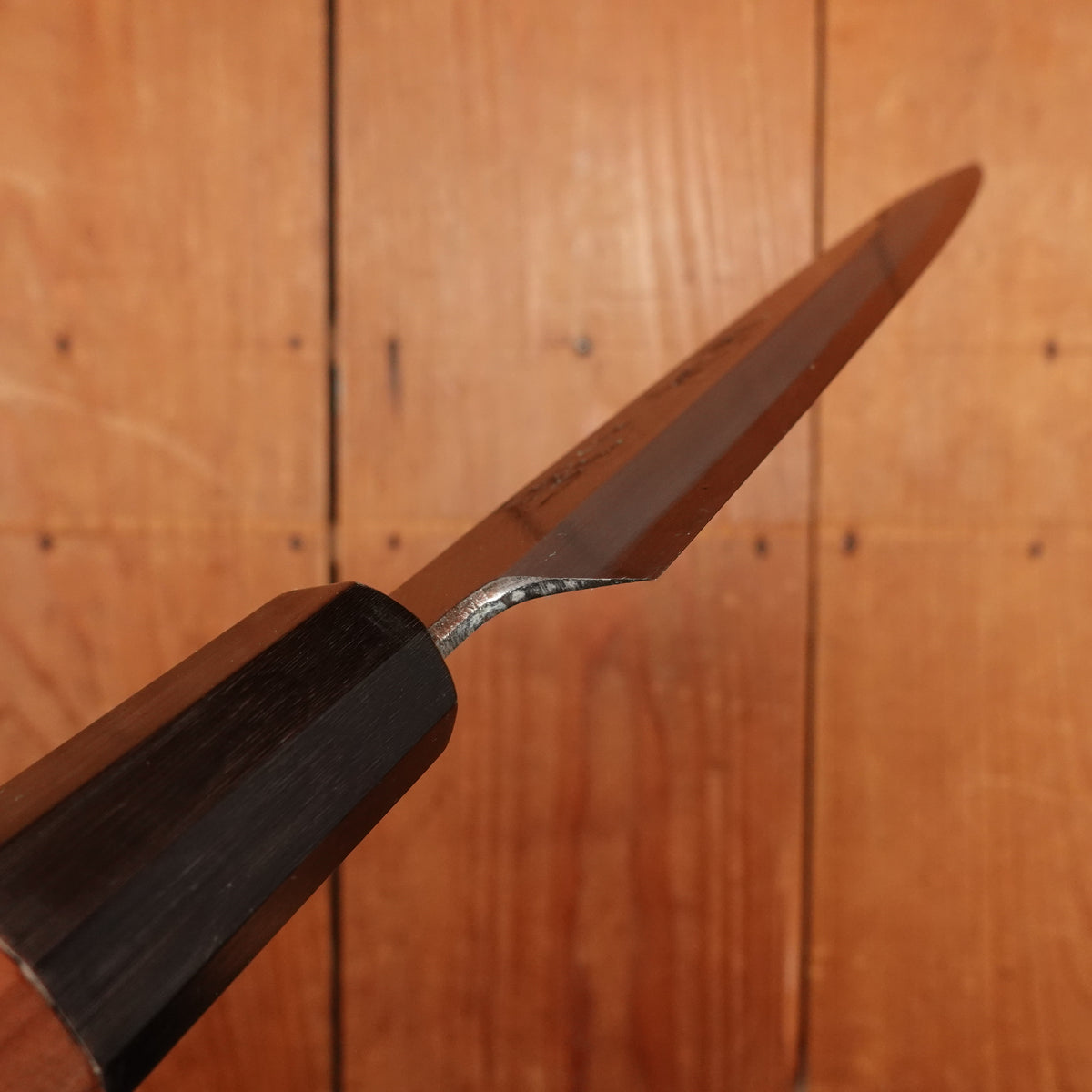
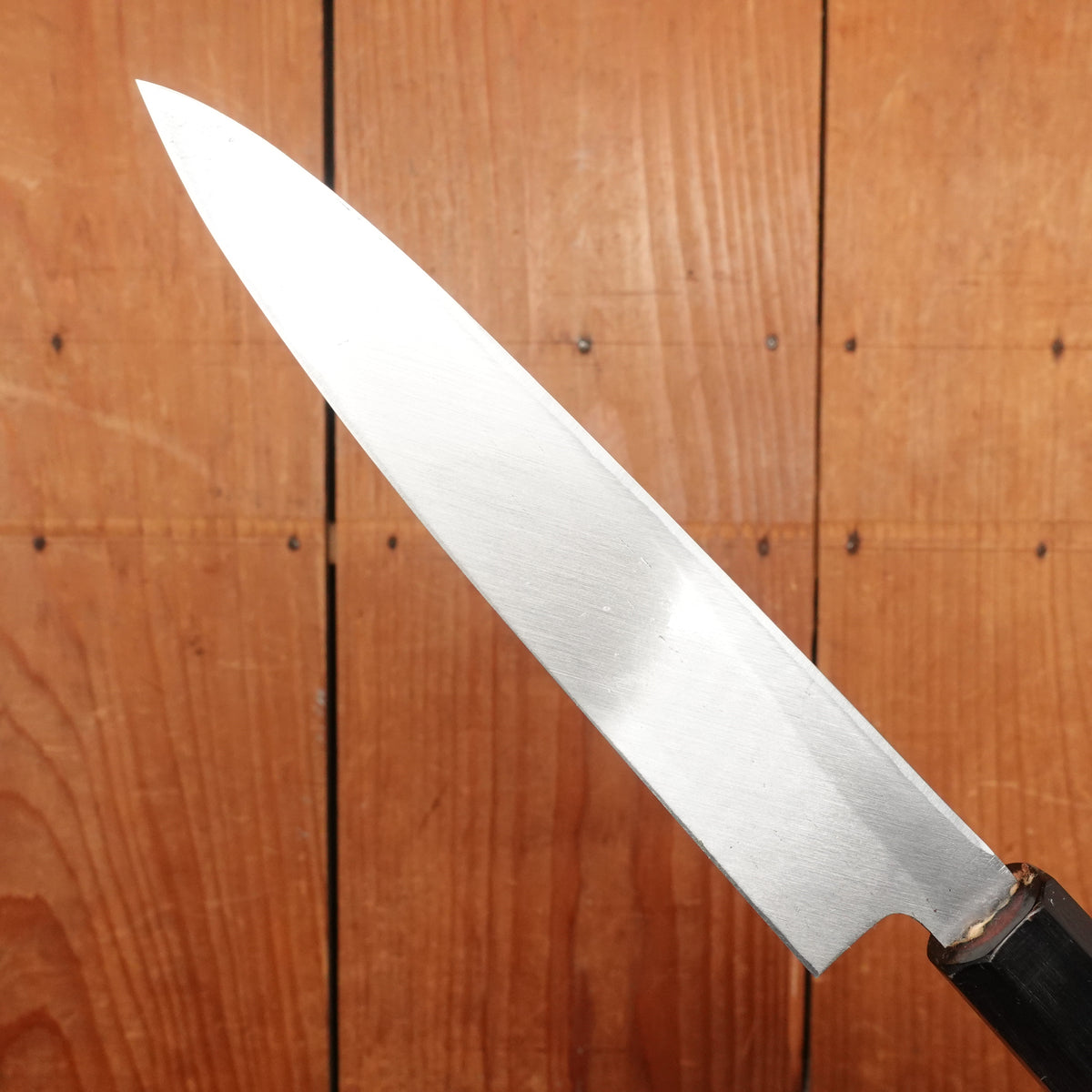

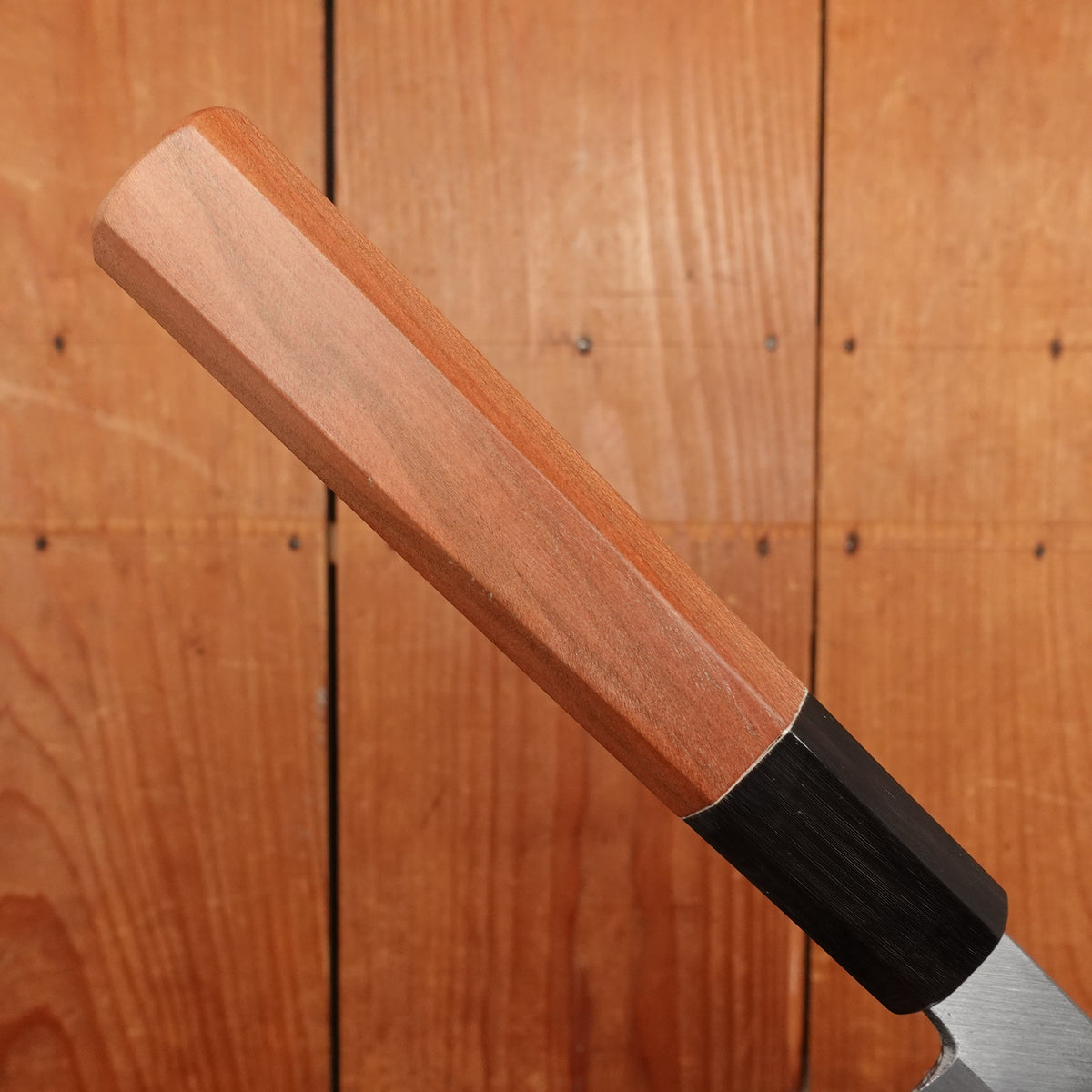

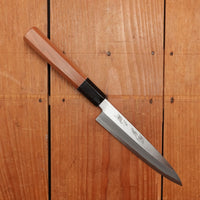
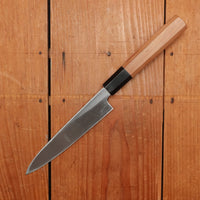
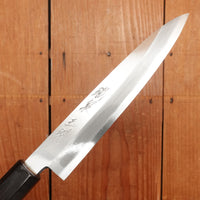
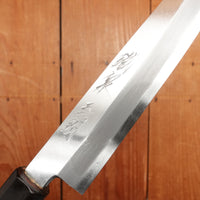
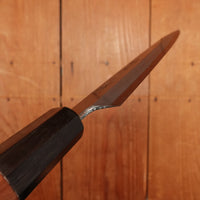
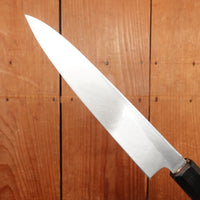
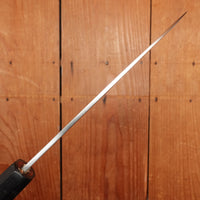
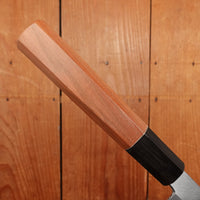
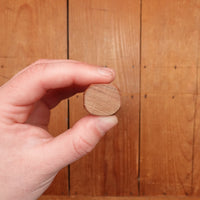
Tanabe Tatara Tanaka x Shimizu 150mm Petty Single Bevel Tamahagane Steel
-
Regular Price
-
$745.83
-
Sale Price
-
$745.83
-
Regular Price
-
Sale
Sold Out
-
Unit Price
- /per
- Regular Price
- $745.83
- Sale Price
- $745.83
- Regular Price
- Unit Price
- /per
We are very honored to be able to offer a limited series of knives made with hand made tamahagane steel. Tamahagane is the predecessor of the industrial carbon steels that have become essential for hand made Japanese knives. The trajectory of Japanese blade making technology and approaches to edged tools all draw directly from the unique properties of this steel. Tamahagane steel is easy to forge laminate where hard steel is supported by softer tougher iron or mild steel which has become an integral part of Japanese blade making. Tamahagane can be easily polished at high hardnesses, resulting in the techniques of fine finishing with naturally occurring Japanese stones that still informs Japanese sharpening. Simply put, without tamahagane Japanese smithing and blade making as we know it would not exist.
This knife is hand forged in Sakai by dentoukougeishi blacksmith Yoshikazu Tanaka and hand ground by Masaya Shimizu also in Sakai.
Tatara steel making culture nearly disappeared, but in recent years craftsman determined to pass on the art form to future generations have kept the tradition alive. Tatara steel making began over 1400 years ago in the Izumo district—an area which has been a focal point for Japanese steel making due to the high quality of it’s iron sand found in its mountain rivers and rich forestry for fuel. At its peak the area was producing 80% of Japan’s steel.
The Tatara method involves first creating a clay furnace with bellows which can only be used once as it is consumed in the continuous application of high heat reaching 2700F. In one operation 13 tons of sand iron and 13 tons of wood charcoal is burned for 3 nights and 3 days under constant supervision and adjustments, during which impurities are removed and the purest form of Kera (lump of steel) is created. The purest and best parts of this Kera is called Tamahagane, and has historically been the material used to make Samurai katanas. In the Meiji period cheaper forms of steel and furnaces began to be imported from the West, and the art of Tatara steelmaking declined, only to eventually disappear altogether at the end of the Taisho period.
After 11 generations of being samurai warriors, the Tabe family began steel making in 1460 after the founder Hikozaemon had a dream where he was told to begin steelmaking and the next day went to the riverbed to collect sand iron. By 1755 the family was named the head ironsmith of the local powerful Matsue-Han (Domain), responsible for meeting the increasing demand for steel production in that time period. Kera (steel clump) made from the Tabe family was displayed in the Chicago and Paris World Expos in the 1800s. The symbolic katana used to protect the emperor was also made from steel produced by the Tabe family in the Taisho era, the highest honor.
In 2016 the 25th generation Tabe Chouemon declared that he would resume the Tatara production,, both for his family’s pride but also to help revitalize their local economy. Izumo Taisha, the oldest and arguably the most important Shinto shrine in Japan, provided the starter fire from their sacred fire, and it is being burned continuously at the Tatara manufacturing site to be used at each operation. The Tabe family now conducts 2 Tatara operations a year, creating the ancient tamahagane steel and now combining it with modern design and features.
Blacksmith: Yoshikazu Tanaka
Grinder: Masaya Shimizu
Steel Type: Carbon
Steel: Tamahagane
Handle Material: Ho Wood & Buffalo Horn Ferrule
Weight: 84g
Height at Heel: 29mm
Overall Length: 276mm
Cutting Edge: 144mm
Thickness: 3.03mm
This is a carbon steel knife. Carbon steel is expected to develop a dark patina with use. It needs to be hand washed and dried immediately after use. Do not air dry. Do not put it in the dishwasher. Long exposure to moisture and debris will result in rust. Any rust development should be removed with a light abrasive.
Twisting, scraping, and heavy use, as well as use on hard and very dense objects can lead to edge damage. Use on a quality wooden cutting board will help the knife stay sharper for longer. Use on hard surfaces like plates and bamboo will reduce the edge life and can result in edge damage.
We recommend hand sharpening on whetstones. We have found that most Japanese knives perform best at a finer finish starting around 4000. Avoid pull through sharpeners and non-water cooled mechanized sharpening. Ceramic honing rods are preferred.
Recently Viewed
About Bernal Cutlery
We are a full-service cutlery shop offering sharpening services, Japanese and Western culinary knives, vintage knives, outdoor, pocket and craft knives, cooking tools and accessories. We also offer knife skills and sharpening classes, and more.
We are proud to serve kitchen professionals, knife enthusiasts and home cooks alike. Located in the Mission District of San Francisco, California.
766 Valencia Street, SF, CA 94110
1 Ferry Building, Ste. 26, SF, CA 94110
